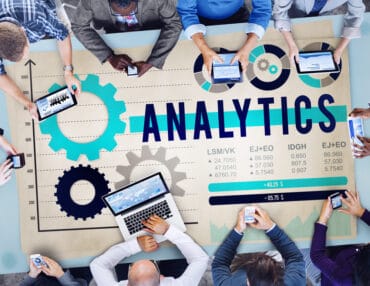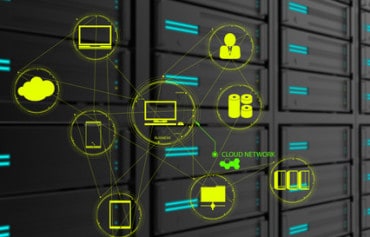
In 2024, businesses will have an array of powerful streaming analytics solutions to choose from, each with its own unique features and capabilities.
The streaming analytics market is expected to reach over $50 billion by 2026. It’s clear that the demand for real-time insights and decision-making is growing, leaving companies no choice but to explore outside traditional batch processing. Streaming analytics is revolutionizing how companies harness data, and the market has responded. Here’s the how and why of streaming analytics and some examples of streaming analytics solutions to consider in 2024.
What is streaming analytics?
Streaming analytics (sometimes called real-time analytics or stream processing) is a paradigm shift involving the processing and analysis of data right as it’s generated or ingested. Where batch processing collects and processes data in chunks, streaming analytics happens as data flows.
It relies on several key principles:
- Real-time data ingestion: These systems ingest data from diverse sources the moment it’s created — think IoT devices and sensors, social media streams, various logs, and more.
- Event processing: Data is processed per event, allowing companies to rapidly analyze and make decisions. Each event can trigger actions or contribute to evolving insights.
- Low latency: The primary objective is to minimize processing latency, allowing real-time responses.
- Scalability: These solutions accommodate substantial data volumes and are inherently scalable so companies can finally manage increasing data loads.
- Complex event processing (CEP): CEP engines enable companies to define and detect intricate patterns, correlations, and conditions within streaming data.
What are streaming analytics use cases?
Streaming analytics has the potential to become highly versatile, reflected in the wide array of use cases across various industries.
- Industrial settings: Enables the real-time monitoring and management of processes of IIoT by analyzing data from sensors and devices. This is crucial for maintaining operational efficiency and safety.
- Financial services: Aids in the detection of fraudulent transactions, supports real-time trading decisions, and monitors market data, ensuring timely responses to market shifts
- eCommerce: Used to personalize product recommendations based on shoppers’ real-time behavior and preferences, enhancing the shopping experience and boosting sales
- Healthcare: Plays a pivotal role in healthcare by monitoring patient vital signs and detecting anomalies in real-time, enabling healthcare providers to deliver more effective and timely care.
- Network and security monitoring: Identifies network intrusions, anomalies, and security threats as they occur, safeguarding critical systems and data
Why is streaming analytics essential for today’s businesses?
Several compelling benefits have put streaming analytics on a top priority list for many companies:
- Timely decision-making: In today’s fast-paced world, businesses need to make decisions swiftly. Streaming analytics empowers organizations to respond to events, trends, and anomalies in real time, ensuring they stay ahead of the curve.
- Competitive Advantage: Organizations that harness streaming analytics gain a competitive edge. They can innovate faster, offer more personalized experiences, and swiftly adapt to changing market conditions.
- Resource Optimization: By optimizing processes and resources in real-time, businesses can enhance operational efficiency and improve resource allocation, leading to substantial savings.
- Enhanced Customer Engagement: Real-time insights enable businesses to engage with customers more effectively, offering personalized recommendations and addressing issues promptly.
- Risk Mitigation: In industries like finance and cybersecurity, streaming analytics is essential for identifying and mitigating risks as they emerge, protecting assets and reputation.
Embracing this technology is not merely an option but a strategic imperative for those looking to thrive in the data-driven future.
Solutions to consider in 2024
As the demand for real-time insights and data-driven decision-making continues to rise, the streaming analytics landscape is evolving rapidly. In 2024, businesses will have an array of powerful streaming analytics solutions to choose from, each with its own unique features and capabilities. Here, we highlight some to consider below. (Note: This is not meant to be an exhaustive list of all companies that work in the streaming analytics space.)
- Altair Panopticon: Altair Panopticon provides real-time data visualization and monitoring tools for streaming data, helping businesses gain insights and react swiftly to changing conditions. Users can create stream processing applications and intricate visual interfaces without coding, making data-driven decisions effortless.
- Apache Kafka: Apache Kafka remains a stalwart in the world of streaming analytics. It is an open-source, Java and Scala-based distributed event store and stream-processing platform. It unifies high-throughput, low-latency handling of real-time data feeds. Kafka offers Kafka Connect for external system connections, Kafka Streams for stream processing, and optimizes network roundtrips through a “message set” abstraction, enhancing performance.
- Apache Flink: Apache Flink is an open-source framework by the Apache Software Foundation, unifying stream and batch processing. Its distributed dataflow engine in Java and Scala excels in data-parallel execution. Flink supports bulk, batch, stream processing, and iterative algorithms and ensures high throughput and low latency. It offers fault tolerance, supports multiple programming languages, and integrates with various data storage systems.
- Apache Spark Streaming: Apache Spark is a widely used big data framework that offers streaming analytics through its Spark Streaming module. It provides batch processing, interactive queries, and real-time streaming in a unified platform.
- Amazon Kinesis: Amazon Kinesis is a managed streaming platform by Amazon Web Services (AWS). It provides services like Kinesis Data Streams, Kinesis Data Analytics, and Kinesis Data Firehose, allowing organizations to ingest, process, and analyze real-time data at scale. It supports many use cases, including real-time analytics and real-time processing of IoT-generated data.
- Cloudera Dataflow: Formerly Hortonworks Dataflow, Cloudera’s Dataflow is an open-source data integration platform that includes Apache NiFi for data ingestion and Apache Kafka for streaming data. It’s well-suited for building data flows and processing real-time data.
- Confluent Platform: Confluent offers a commercial platform built around Apache Kafka. It provides additional enterprise features, management tools, and connectors to simplify the deployment and management of Kafka-based streaming applications.
- Google Cloud Dataflow: Google Cloud Dataflow is a serverless, fully managed stream and batch data processing service. It provides a unified model for both batch and stream processing, making it easy to build data pipelines for real-time analytics.
- IBM Streams: IBM Streams is a real-time analytics platform designed for high-performance, low-latency data processing. It’s suitable for finance, healthcare, and telecommunications applications requiring real-time insights.
- RapidMiner: RapidMiner is an integrated data science and machine learning platform that offers stream processing capabilities. It allows organizations to ingest, process, and analyze streaming data, making it a strong choice for real-time analytics.
- SAS Event Stream Processing: SAS Event Stream Processing is a tool for analyzing and acting on high-velocity data streams in real time, enabling organizations to make data-driven decisions instantaneously.
- Tibco Streaming: TIBCO Streaming is an enterprise-grade, cloud-ready streaming analytics platform that excels in the rapid development of real-time applications, delivering cost-efficiency and reduced risk compared to alternatives. With the ability to analyze, continuously query, and swiftly respond to IoT and other streaming data, it operates at lightning-fast speeds, providing a potent tool for businesses seeking agility in their real-time data operations.
A final word on solutions to watch in 2024
The field of streaming analytics includes a wide variety of technologies and solutions from numerous providers. The choice between them should be based on the specific needs and context of a business and its real-time application needs.




























